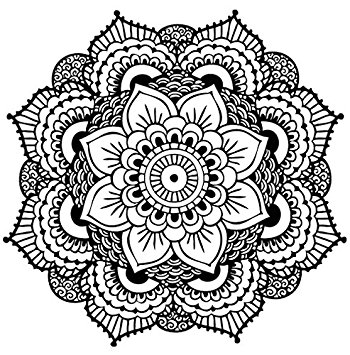“The yogi does not renounce action. He cuts the bonds that tie himself to his actions by dedicating their fruits either to the Lord or to humanity. He believes that it is his privilege to do his duty and he has no rights to the fruits of his actions.”
B.K.S Iyengar Light On Yoga
There is something about the practice of yoga that cuts through the bullshit and gets straight to the inner work. I’ll be honest; sometimes that work can feel awfully heavy. Especially in our society, where we are constantly and purposefully creating shallow distractions. As my yoga teacher says, “It’s the program.”
Life today can feel like a program. We are typically expected to look, behave, think, speak and BE a certain way. We are held to impossible standards, and most of the time those standards have nothing to do with morality, ethics or the makings of a decent human being.
There is a good chance that the seasoned practitioner understands that yoga consists of much more than flexible people doing pretty poses. This tradition is rich in culture, spirituality and substance. It is a lifestyle.
However, many students (even “seasoned” ones) do not fully understand what yoga really is. This is where the Eight Limbs of Yoga come in.
The Purpose of Yoga
The Yoga Sutras of Patanjali, one of the fundamental texts on yoga, describe The Eight-Limbed Path, or the path to the blissful state of Samadhi (relinquishment of the ego and unity with the Divine).
At its core, all yoga serves only one purpose: God realization. Yoga is acknowledgement of the Divine consciousness deep inside of us all. Like I said, pretty heavy, right?
If this all seems like too much to process, it is only because the Western world has watered down this ancient spiritual practice, to the point where it (in some instances) should not even be labeled “yoga.” And we have become accustomed to this watering-down.
But I believe it is time to break the mold. People should have the opportunity to experience the real power that can be harnessed through traditional yoga, and I’m not talking about that 60-minute power flow. 😉
It is important to note that the Yoga Sutras do not even begin to depict or discuss any asanas. This is what distinguishes raja yoga (yoga of the mind) from Hatha yoga (physical methods of purification).
This is not to shun asana in any way, as the postures are an essential part of the path. The relationship between Raja and Hatha yoga is eloquently explained by Iyengar:
“It is generally believed that Raja Yoga and Hatha Yoga are entirely distinct, different and opposed to each other, that the Yoga Sutras of Patanjali deal with Spiritual discipline and that the Hatha Yoga Pradipika of Swatmarama deals solely with physical discipline. It is not so, for Hatha Yoga and Raja Yoga complement each other and form a single approach towards Liberation.”
This post will break down the Yamas, explain what they are and why they are one of the necessary links in the attainment of consciousness. The other limbs will be sequentially introduced later.

Yama
The first limb of yoga is Yama, or ethical disciplines that one should obey in everyday life. Yama means, “to control.” Without the Yamas, the yogi cannot begin the journey to Samadhi.
There are five Yamas:
Ahimsa
Ahimsa means “not killing” or non-violence. But in a positive sense it also translates to love and respect for all living things. Ahimsa is one of the reasons many yogis choose not to consume animal products. A good yoga teacher possesses the qualities of ahimsa and applies them by holding space for their students and creating a safe, nurturing environment for them to learn and grow.
Ahimsa also goes along with freedom from anger and fear. The yogi knows that death is inevitable; therefore he does not dwell on it. The future is not something to be feared, but rather something mysterious and beautiful to look forward to.
Satya
Plain and simple, Satya is truthfulness and honesty. The yogi’s life must align with this principle of morality. However, dishonesty is not limited only to “lying” per se. There are four forms of dishonesty that the yogi should refrain from: telling lies, abuse and obscenity, ridiculing others and making false statements about others.
Asteya
Asteya is non-stealing or freeing oneself from the desire to posses what another has. As per Mahatma Gandhi, “Wealth without work” is one of the Seven Social Sins. Iyengar emphasizes that the yogi should live a minimalistic lifestyle and that “if he gathers things he does not really need, he is a thief.”
Brahmacharya
Brahmacharya is “celibacy, religious study, and self-restraint” but it is also interpreted as honoring oneself and others in relationships of intimacy. The idea behind this yama is preservation of energy or proper use of energy.
This is not to say that celibacy is required to live a yogic life. The Bhagavad Gita notes that a yogi should not renounce his social responsibilities (like family and career), but channel his emotions “first toward the quest for the absolute higher realization.”
Aparigraha
Aparigraha is “non-covetedness.” It is living without greed, gluttony, or desire and with generosity. This yama conveys that one should not take what has not been earned or worked hard for, nor accept anything from another as a favor or “handout.”
Aparigraha allows the individual to live the simplest life possible, without feeling a lack of anything or need for anything. The yogi should feel satisfied with what he already has.

Conclusion
Even if you do not practice yoga, implementing these five Yamas into your life can only benefit you. In fact, I personally view them as five very basic qualities that contribute to a decent human being’s character.
With the yoga dogma removed, the Yamas are simply five principles of morality. They are the stepping stones toward beginning to take our yoga off the mat, where it matters most.
The next time you are faced with a challenge, try to associate that challenge with the corresponding Yama. Then, take note of how your reaction to a situation may have transformed into an action.
Are you familiar with the Eight Limbs of Yoga? How has yoga impacted your life? Please share your thoughts!



